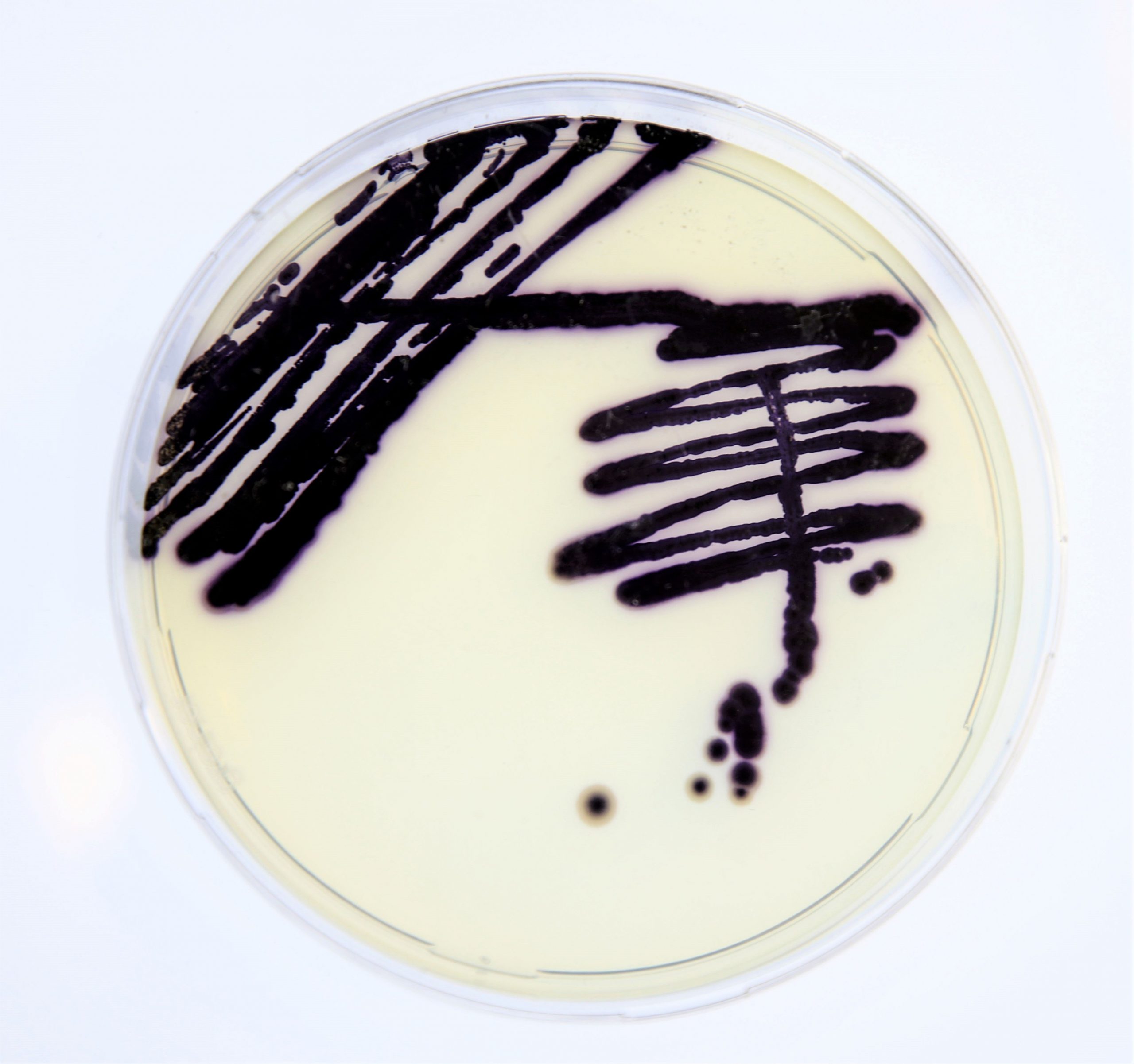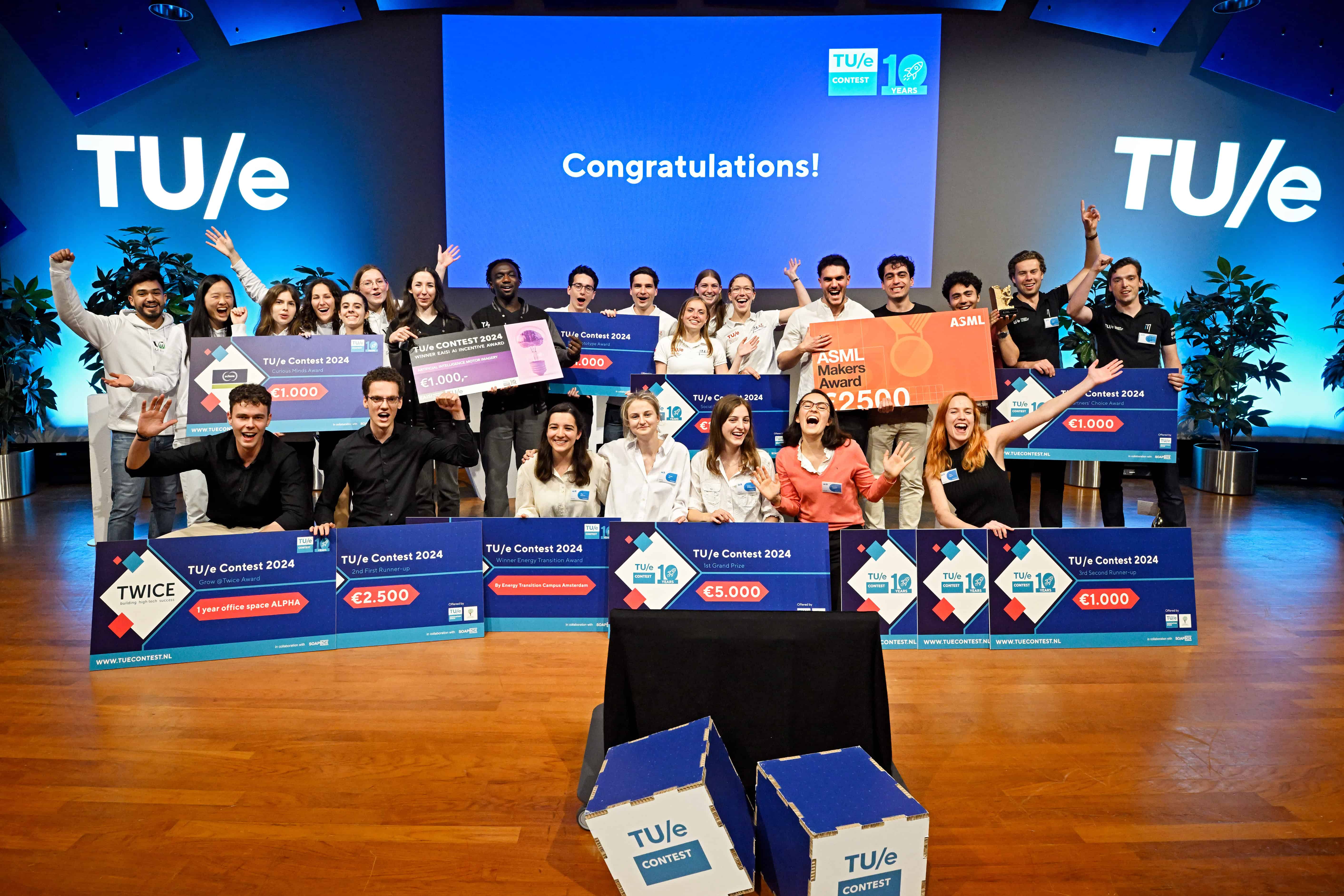
“Bacteria are the most intelligent, environmentally friendly and resource-efficient way to produce textile dyes,” says Karin Fleck, founder of Vienna Textile Lab. “Bacteria occur in nature, can be stored as a strain in laboratories and propagated at any time. They synthesize colors in a natural way”.
Karin studied technical chemistry at TU Wien in Austria. For many years she had various managerial positions at several energy companies such as Vattenfall Energy Trading in The Netherlands and in Germany. When she met Cecilia Raspanti (who had founded the company Textile Lab Amsterdam), she became inspired to use bacteria to make textile dyes. Cecilia had already tried this herself, but without much success. “It is not so much about the challenge of using bacteria as a raw material. More than anything, you actually need a lot of know-how and understanding of scientific methods. You then also have to go about it very carefully. There could potentially be germs among them,” Karin explains.
She had already been working with dyes when she was graduating. But the whole sector was new to her in principle. That’s why she sought support via:
- Fritsch, a textile dye company in Vienna, which specializes in environmentally friendly dyes;
- Erich Schopf, a bacteriographer from Vienna, who makes paintings using bacteria;
- the Institute of Applied Synthesis Chemistry at TU Wien.
Microorganisms tend to produce microbial dyes in response to altered growth conditions. They protect cells from external influences such as salt or temperature stress, light or intense competition. These substances often also have an anti-bacterial effect. Bacteria-based textile dyes have the same properties as conventional synthetic dyes when used on a daily basis.
Karin Fleck elaborates further:

What solution does this bacterial-based textile dye offer and why is that important?
It is an alternative to synthetic dyes, which to a large degree have a detrimental effect on health and the environment. But also particularly for people in the textile industry who are constantly in contact with these dyes. Furthermore, everyone wears clothes and is therefore exposed to the chemicals that they contain. These dyes are currently under critical examination throughout the world. The EU has guidelines on synthetic dyes too. Dyes are banned on a regular basis or their use is restricted. This creates more room for new, innovative dyes. But especially for new production systems which do not rely on crude oil.
What has been the biggest obstacle that had to be overcome?
Our limited ability to hire people. The Austrian labor market is geared towards permanent jobs and employee security. Yet the world of start-ups is unpredictable. Above all, people are needed on a project basis in order to be able to cope with any peaks. You need to be able to react flexibly to the circumstances when you’re a young company who has growth spurts.
What has been a high point so far? What are you particularly proud of?
There have been many wonderful moments. Such as winning prizes. When we first started out, we already won 3rd place at the Climate Launchpad. This year we won the BOKU Start-up Prize from the University of Natural Resources and Life Sciences in Vienna. All the invitations we’ve received have also been very encouraging. For example, for the TEDxCanggu in Bali or for a pitch at CLIX , part of the 2018 Abu Dhabi Sustainability Week.
It’s also great to see how people, customers and organizations from all over the world know how to find us. We talk to people from the US, Indonesia, Sweden, Estonia, the Netherlands, Germany and so on. For instance, I came in contact with Material Connexion in New York. This is a collection of some of the most diverse, innovative materials for industry, local tradespeople, artists and designers. Samples from Vienna Textile Lab have now also been included in their collection.
We derive the most pleasure from everyone who supports us. People who let us know that they appreciate how good our bacteria-based textile dyes are. The experts who really help us out when we can’t figure something out right at that moment. But also local organizations that believe in our success. These include the Vienna Impact Hub or the TCBL, Textile clothing and business labs.

How is everything going at the Vienna branch?
Fine. We can have confidence in the structures and systems. We have had many rewarding and supportive experiences involving funding agencies and universities. There are people here who are promoting us, even when they don’t know us personally. I can’t judge whether things are any better anywhere else. But I know that there is more money available for the biotech sector in Germany and the US.
Where will the start-up be in five years’ time?
By then we will have elevated our manufacturing method to an industrial level. We will have a customer base that will facilitate further growth, and perhaps we’ll be expanding on a global scale.
What distinguishes Vienna Textile Lab from similar companies?
We have opted for solid partners. This in turn makes us stronger and more competent. Aside from that, we want to remain transparent and have discussions with all potential customers or partners. Not only with large corporations, but also with niche companies, artists and designers. That may well make it more complicated, but that makes it all the better as well. We learn a lot through this kind of interaction and are therefore able to position and develop our products much more effectively. Last but not least, we have an extremely wide variety of our most important employees: bacteria.

Read more articles about start-ups here.







